When the Games came to town: DOOH delivers contextual gold; attention tops medal tally
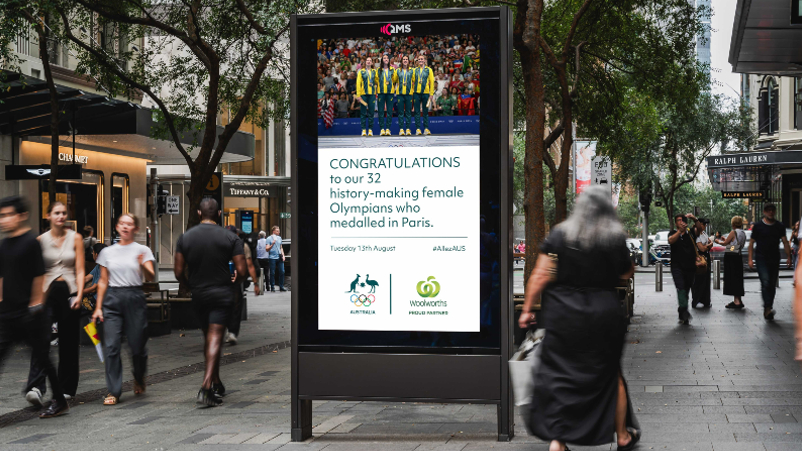
The Paris Olympics underlined the power of digital out of home as a broadcast medium, creating spectators in every city, says Independent Global Advisor Anne Parsons. In Australia, the likes of Toyota, Allianz, Woolworths, Stan and Patties Foods took centre stage as QMS delivered total engagement in real time.
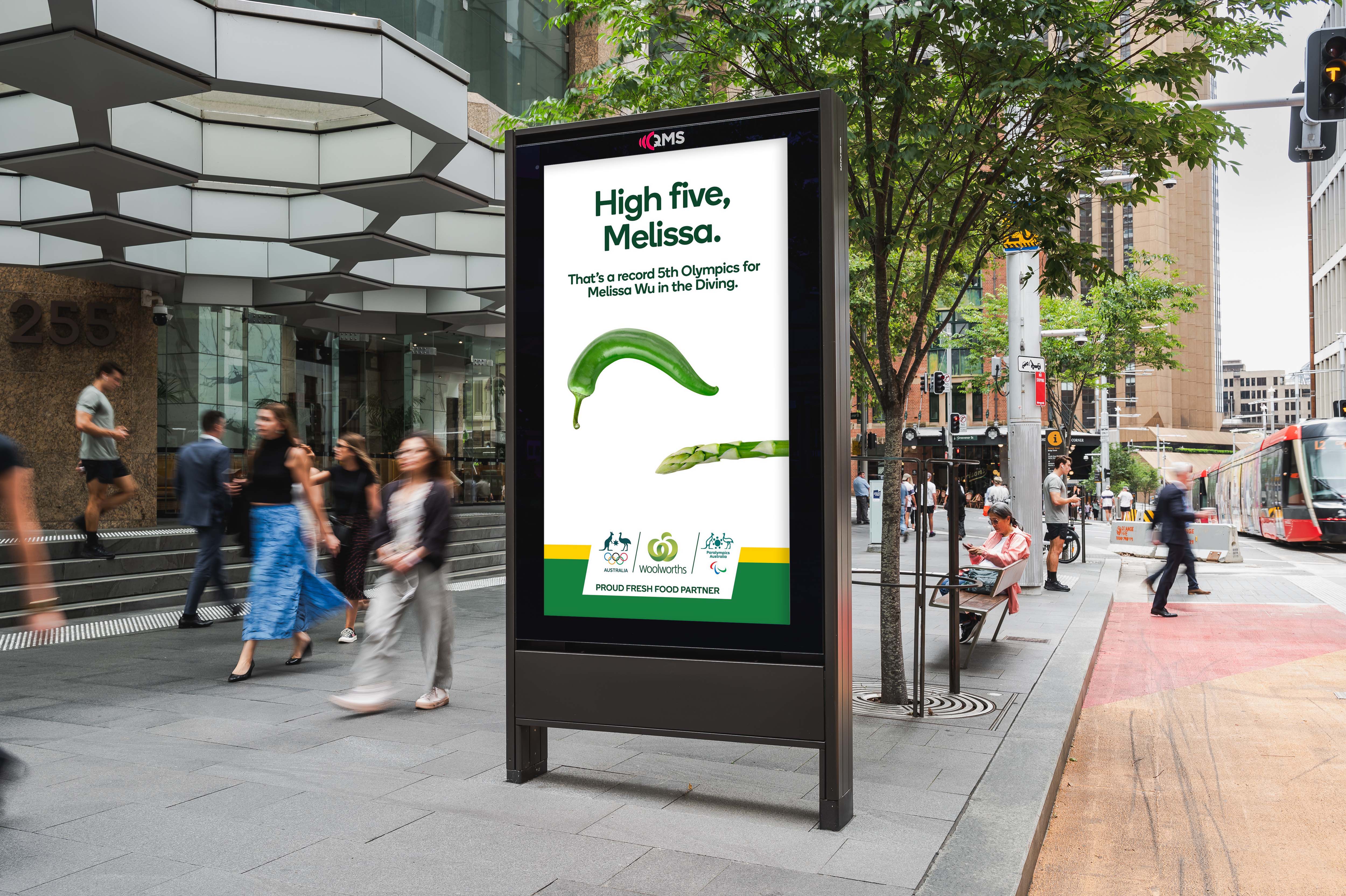
The anticipation of something that occurs every four years.
The added excitement of the Games at full tilt after the chasm of Covid.
The challenges and victories for athletes.
The thrills and memories for spectators.
And in 2024 we could add the much needed opportunity for the world to feel united by a sense of camaraderie, starting at a global level and cascading down to countries, cities and towns.
Well, that’s what happened when the Games came to town. They started and starred in Paris but they played and shone across the world. And they glittered like they were our own show in Australia, lighting up the streets and major thoroughfares across our diverse cities.
From Opening through to Closing ceremony this was a show, like previous years, made for the screen. As someone in the stands at the fencing, breakdancing and handball I sensed the energy. But I really only felt the full electricity when I saw it played out on a screen. There I saw it all, not just pieces.
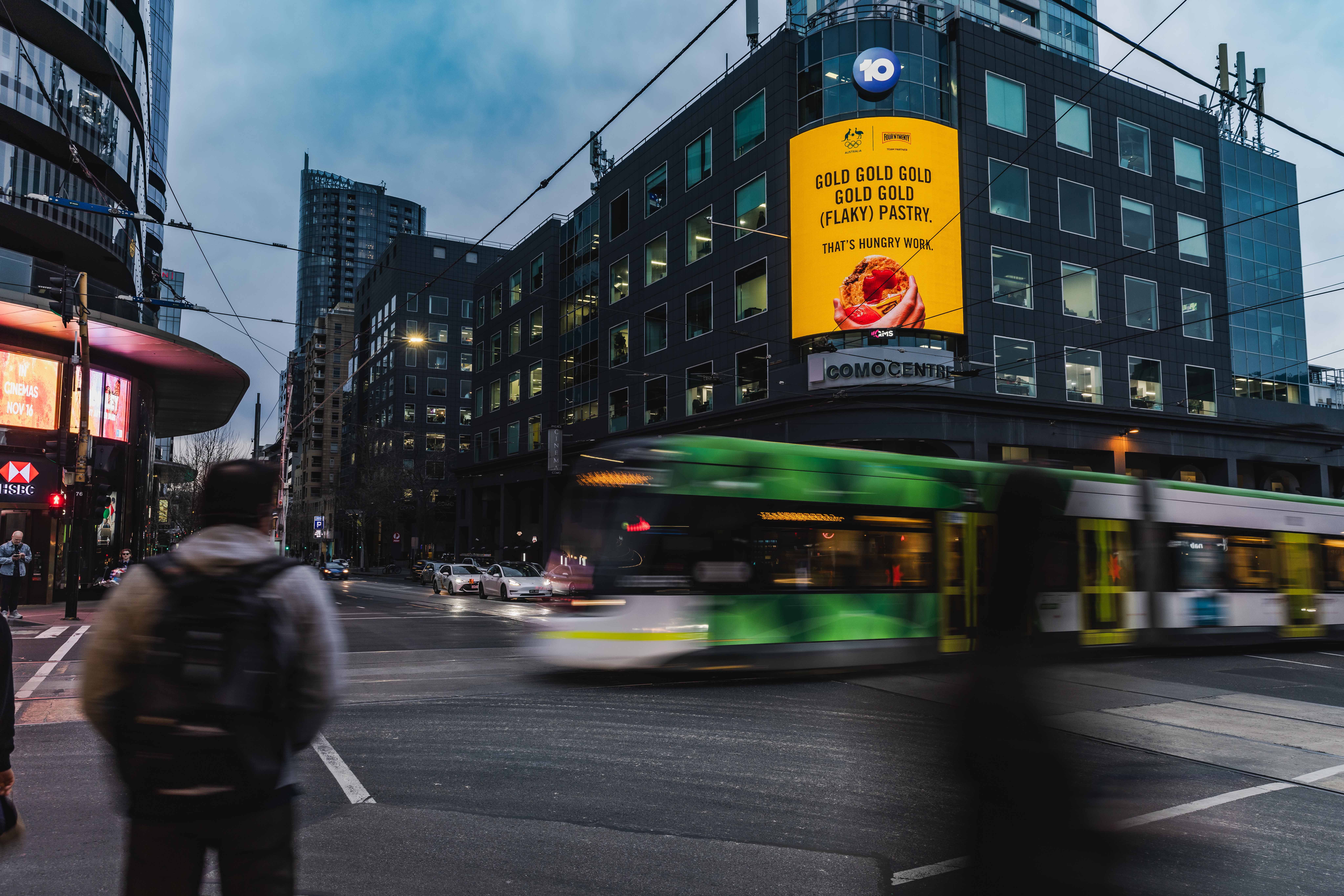
But unlike previous years, that screen magic was no longer just delivered via television. An equally brilliant show was happening on digital screens, in Paris, across Europe, the US, Asia and on the far other side of the world, in Sydney, Melbourne, Brisbane, Canberra, Adelaide, Perth… the Games were in our midst.
This Olympics that dared to be held in grand exhibition spaces, around historical monuments and sometimes in sporting arenas was the Olympics unleashed from historical standards. Oui. Paris really took the Games to the streets. Breakdancing entered as the sport from the streets, in the Games being played out on the streets and enjoyed by everyone on the streets. It was out of the ordinary in its design and execution and it delivered out of the ordinary results for audiences. Digital screens enabled us all to be spectators wherever we were. They made it impossible for us not to see it everywhere we went.
From previous years where out of home (OOH) was part of promoting Olympic brands, in these Games digital out of home (DOOH) found its true gold, front and centre in city precincts and byways, enabling us all to experience the action.
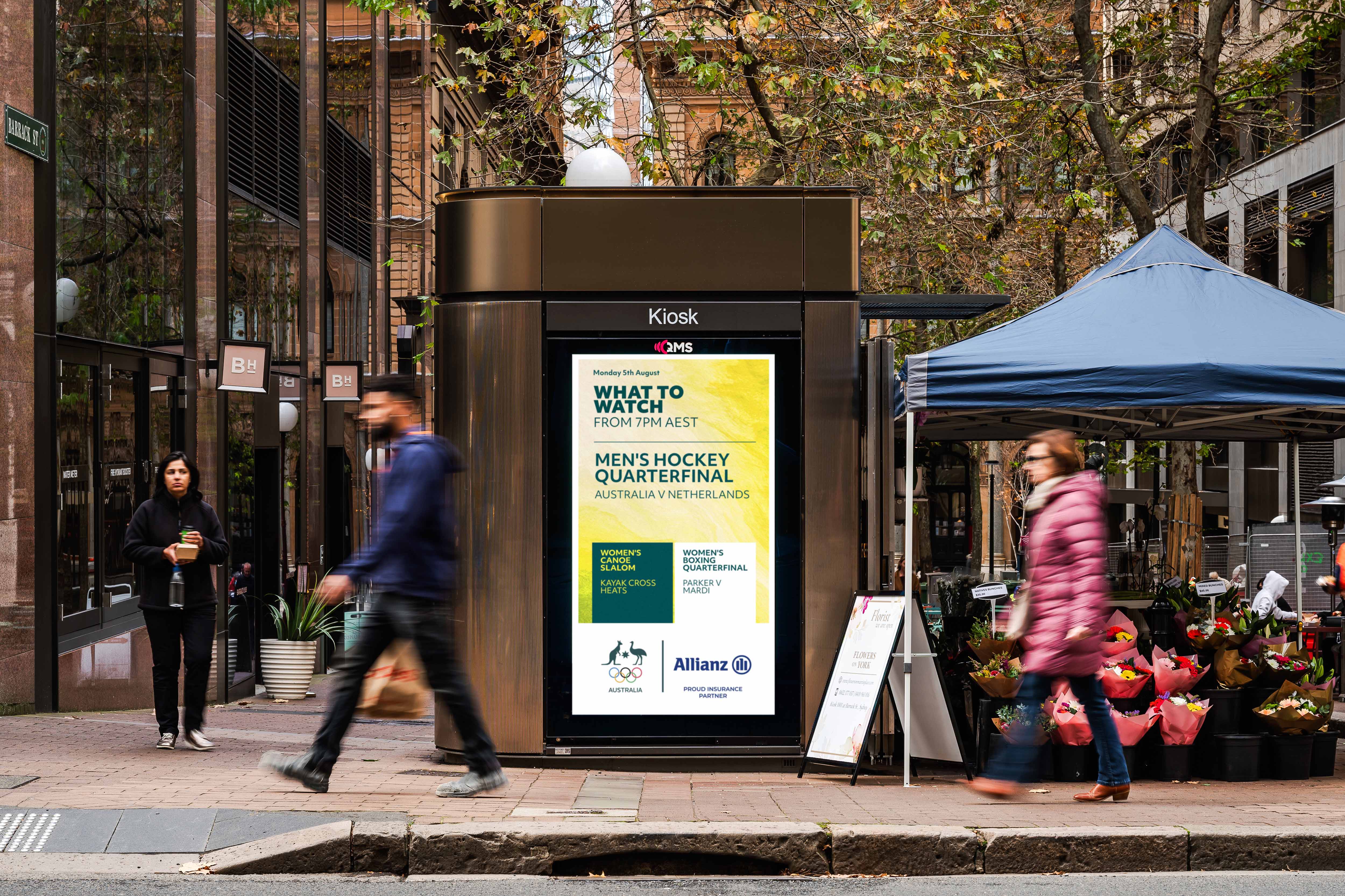
There was a rich “tonne-load” of specifically crafted messages that hit Australia. In Paris DOOH kept us all aware how the Orange network, for example, was keeping the community connected with athletes and revelling in the results of their new swimming hero Leon Marchand. LVMH made sure we could all applaud with QR codes for the latest medal winners.
But Australia, take a bow. You demonstrated DOOH execution at its greatest –content that kept Aussies up to date with whatever was happening when it was happening. It was a gargantuan achievement considering the opposite hemisphere at the opposite end of the time clock but made possible by a world class DOOH network dynamically serving content that delivered an immediacy and impact not possible with other channels.
The media speak is about digital capability delivering content in real time, marrying demand with impact and getting total engagement. That’s an accurate description of what the QMS Paris digital screen network achieved for clients and their audiences. A more human version is the tailored way it gave everyone on street or road, an unavoidable way to see the Games breaking news and results. DOOH connected all Australians with these messages. At all times.
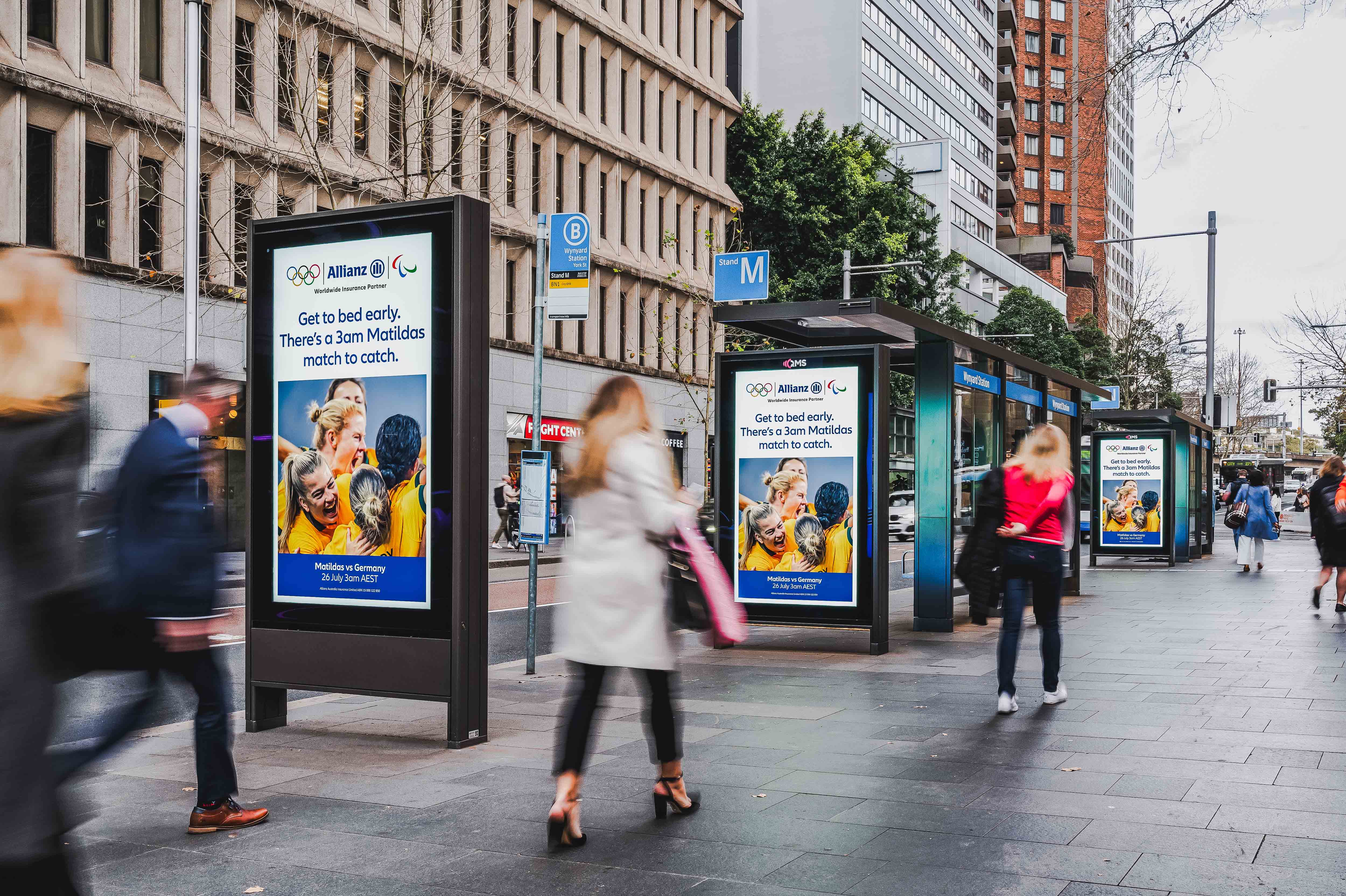
I saw the power of this immediacy translate to the inclusiveness and harmony of these Games. I have no doubt they were always going to be brilliant in their own right – outstanding athletes would see to that. But I think that the level of communication and connection that DOOH screens brought to these Games was a level never before seen, and it made a difference.
It helped make the excitement, satisfaction and sometimes, the anxiety of the Games. It’s uniquely how ads from Toyota, Allianz, Woolworths, Stan and Patties Foods managed to have their own centre stage with the Olympics in Australia. Each of their associations played a role in bringing those stories home and letting us all share in the strength, success, humility and frustrations of our athletes and our team. Their stories and performances are now the stuff of history and we all feel like we experienced it with them, result by result.
The QMS digital network exists to tell stories for brands for the benefit of the audience, but in this case it was more – they let us be spectators and cheer squad. DOOH made it possible that as it happened in Paris, the news could be breaking in Sydney or Melbourne. That’s some wow factor, showing the digital supremacy of delivering a broadcast scale audience with the most wanted and in demand news possible in that moment.
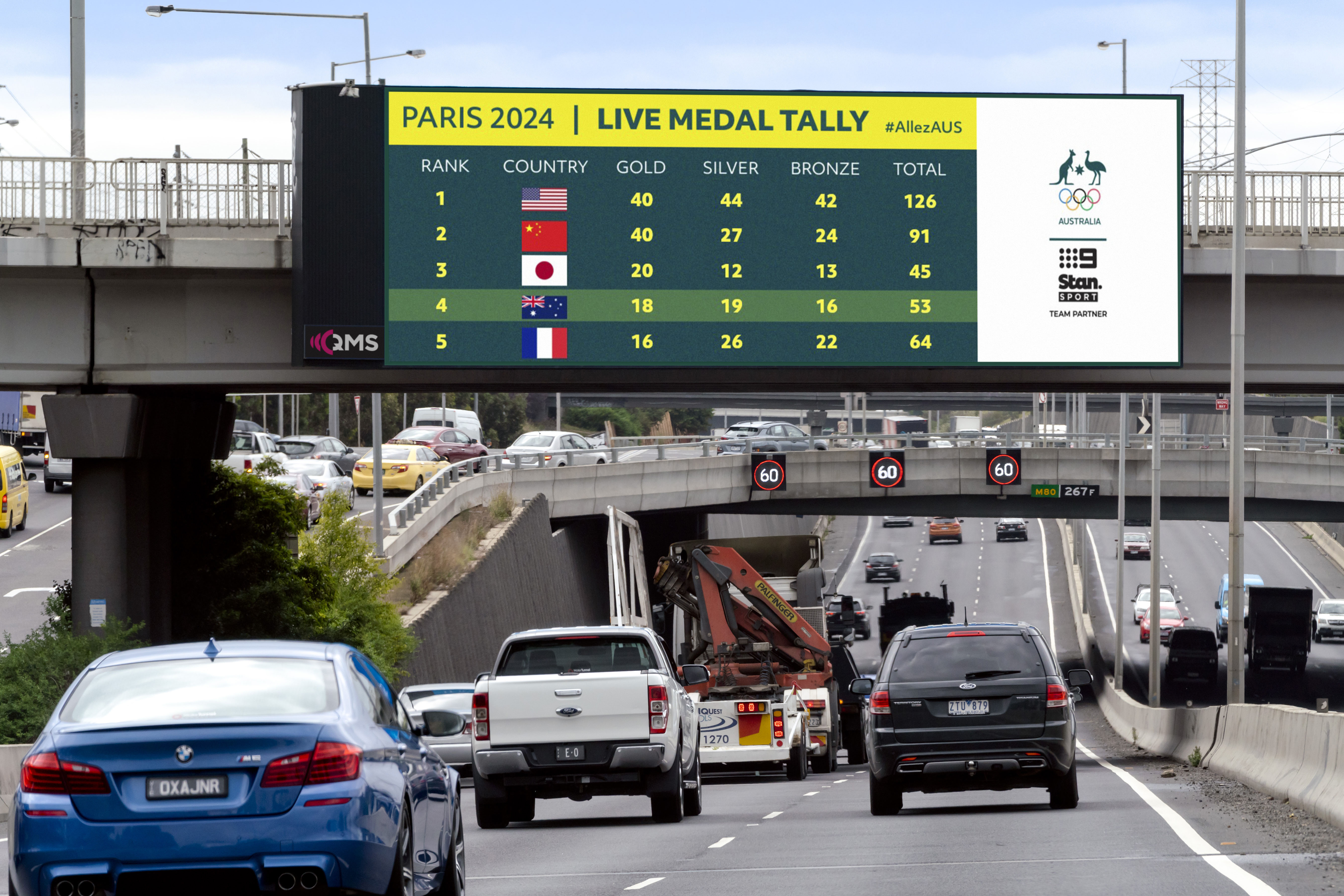
This was a gold medal for contextual messaging and a total medal tally count that belongs to attention.
It felt like DOOH screens were the great equaliser – the channel that gave us all the same chance, wherever we were or whatever we were doing, to be connected to the Games. A global water cooler moment if ever I saw one.
These Games have given advertisers a glowing example of how premium DOOH can work for them in a most dynamic, engaging and audience attentive way. It’s how we all shared in the pride and the glory when the Games came to town.

